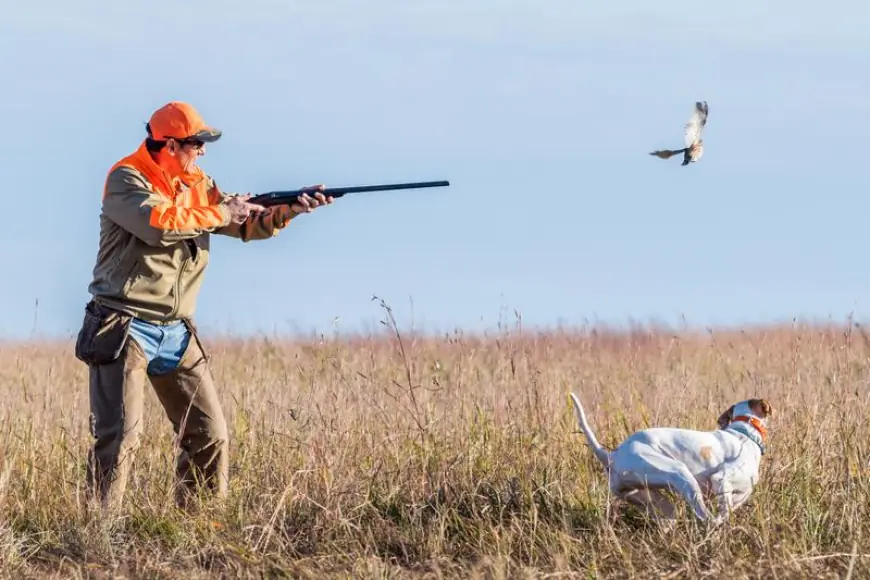Nebraska’s Pheasant Hunting Regulations: What Every Hunter Should Know

Pheasant hunting in Nebraska is a cherished tradition for outdoor enthusiasts. With its vast farmlands, rolling plains, and thriving wildlife, the state offers some of the best opportunities for pheasant hunters. However, like any other state, Nebraska has specific regulations in place to ensure the safety of hunters, maintain sustainable wildlife populations, and protect the environment. Whether you are a seasoned hunter or a first-time visitor, understanding these regulations is key to having a successful and legal hunting experience.
In this blog, we’ll outline the most important Pheasant Hunting Nebraska regulations you should know and also touch upon how these compare to Pheasant Hunting Iowa to give you a broader understanding of hunting laws in the region.
1. Hunting Seasons and Dates
Usually starting in mid-October, Nebraska's pheasant hunting season extends until early January. The particular dates, however, can vary somewhat every year based on state management choices and animal conditions. Before making your hunt schedule, be careful to find updates on season dates from the official Nebraska Game and Parks Commission (NGPC) website or other local sources.
2. License and Permit Requirements
Hunters seeking pheasants in Nebraska must have a current hunting license. A small game license is needed for residents; non-residents also need a small game license coupled with an additional habitat stamp. Though they differ in cost and the necessity for a habitat stamp in Nebraska, the Pheasant Hunting Nebraska license criteria are similar to those Pheasant Hunting Iowa.
Before leaving to make sure they follow state hunting regulations, non-residents should make plans beforehand and get their hunting licenses online or from approved merchants.
3. Bag Limits
Usually three pheasants per day, Nebraska's bag limit is based on possession restriction of 12. Hunters must thus only gather three pheasants on one day and cannot have more than twelve pheasants in total at any one moment. Check local rules and NGPC updates to be sure you're staying inside legal limits since bag restrictions change somewhat depending on the area.
4. Hunting Methods and Firearms
While rifle use is forbidden, hunters in Nebraska can shoot pheasants using shotguns. Depending on the kind of terrain and their objective, hunters using public land or hunting preserves must use shot sizes ranging from No. 4 to No. 7½. Although lead shot is widely used, many locations now require steel shot to reduce environmental damage; thus, be sure local rules closely reflect this.
With restrictions on using rifles and specific shot sizes, Pheasant Hunting Iowa follows similar guidelines for hunting weapons and ammo. Before their hunt, hunters should educate themselves with the details.
5. Public Land vs. Private Land Regulations
Hunting on private hunting preserves in Nebraska and public areas follows separate rules. Hunters on public lands must abide by particular access policies covering parking, hours of hunting, and observance of no-hunting zones. The NGPC oversees public lands in Nebraska; hunters must stay inside approved hunting zones.
Hunters on private land must get permission from the landowner before they hunt. If hunting on a Nebraska hunting preserve, particular policies for the preserve will apply, which can include limitations on shotguns, hunting hours, or the total bird count that can be taken.
Though there may be some variations in land management practices and hunting locations, public land rules in Iowa are comparable to those of Pheasant Hunting Iowa.
6. Use of Dogs in Hunting
For pheasant hunting, many hunters employ trained dogs since they assist in tracking and bird retrieval. Dogs are used and welcomed in Nebraska since they considerably improves the hunting experience. Still, the dogs have to be under control all the time. Nebraska pheasant hunting rules include rules on dog training, including prohibitions on using dogs during some off-season months.
Using dogs is likewise encouraged in Pheasant Hunting Iowa, but hunters also have to make sure their canines are under control and well trained. Before putting your dog onto the field, find state-specific dog training rules.
7. Hunter Orange Requirements
Safety is first in all hunting activities; when hunting upland game, especially pheasants, Nebraska hunters must wear minimum 200 square inches of blaze orange clothing. This covers a vest, caps, or jacket. This regulation lowers the danger of mishaps and raises visibility.
Iowa has comparable hunting regulations to guarantee that every hunter is immediately recognizable to others, therefore lowering the possible risk of dangerous mistakes.
8. Prohibited Activities and Areas
To preserve the environment, public safety, and wildlife, certain of Nebraska's counties are set aside as "no hunting" zones. Furthermore strictly forbidden are acts such hunting using illegal techniques, hunting without permission on private land, and carrying unapproved weapons or ammunition. Respect property boundaries and hunting limitations always to avoid fines.
Although Pheasant Hunting in Iowa and Nebraska have different particular limits and regulations, both states strongly safeguard the environment and animals to guarantee sustainable hunting.
9. Conservation Efforts and Habitat Management
Pheasant habitat preservation is very important to Nebraska and Iowa alike. Among the various conservation initiatives the NGPC oversees in Nebraska is the Walk-In Access Program, which gives hunters access to private property for hunting use. These preservation initiatives are meant to guarantee habitat protection for next generations of hunters and sustainable animal numbers.
By contrast, Iowa also has conservation initiatives including the Iowa Habitat and Access Program (IHAP), which lets hunters access private property for pheasant hunting while so advancing habitat preservation.
Conclusion
Although Nebraska's pheasant shooting presents interesting chances for hunters, it's important to be informed with state rules before leaving. Compliance with these guidelines guarantees a safe and fun hunt from getting the appropriate licenses to honoring bag limitations, gun restrictions, and land access requirements. Knowing these guidelines also shows your dedication to environmentally friendly hunting methods, which will help to ensure pheasant numbers for many years to come.
Research local rules, respect the surroundings, and hunt ethically as you schedule your Pheasant Hunting Nebraska trip. Happy searching!

 Stella David
Stella David 










